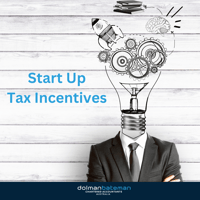The government has proposed changes to the current allowances for some employees who are required...
Research & Development Tax Incentives

The Research & Development (R&D) Tax Incentives is the Australian Government’s way of encouraging investment in R&D activities. If the company has a turnover of less than $20 million per year they are able to obtain a refundable 45% tax offset. Otherwise a non-refundable 40% tax offset is obtainable for those with a turnover of more than $20 million per year.
In order to claim these offsets, you must apply to AusIndustry (who jointly administers the incentive with the ATO) and register your R&D activities. You must register your activities:
- For every income year you want to claim the offset
- Within 10 months after the end of the income year
- Prior to claiming the R&D tax offset in your company income tax return
A R&D entity or a tax agent on behalf of the R&D entity can apply.
To be considered a R&D entity the body corporate must be:
- Incorporated under an Australian law
- Incorporated under a foreign law but is an Australian resident for income tax purposes
- Incorporated under a foreign law and
- A resident of a country with which Australia has a double tax agreement, including a definition of ‘permanent establishment’ and
- Carrying on business in Australia through a permanent establishment as defined in the double tax agreement
Non eligible entities are:
- Are a non-incorporated entity (such as sole trader, partnership or most trusts)
- Are a corporate limited partnership
- Are an exempt entity (entire income is exempt from income tax)
To claim the offset your activities must be eligible R&D activities and must have been performed in Australia (there are some exceptions). These activities are split into two categories, core R&D activities and supporting R&D activities.
Core R&D Activities
Core activities are experimental activities whose outcome cannot be predetermined and is based on the principles of science. This means it must go through the scientific process, i.e. Hypothesis -> Experiment, Observation and Evaluation and then finally the Conclusion. It must be done for the sake of creating new knowledge (such as new/improved materials, products, devices, processes or services). The knowledge cannot be a simple progression from what is already known or applying existing knowledge in a different context or location.
None of the following activities are core R&D activities (source AusIndustry):
- Market research, market testing or market development, or sales promotion (including consumer surveys).
- Prospecting, exploring or drilling for minerals or petroleum1 for the purposes of one or more of the following:
- Discovering deposits;
- Determining more precisely the location of deposits; or
- Determining the size or quality of deposits.
- Management studies or efficiency surveys.
- Research in social sciences, arts or humanities.
- Commercial, legal and administrative aspects of patenting, licensing or other activities.
- Activities associated with complying with statutory requirements or standards, including one or more of the following:
- Maintaining national standards;
- Calibrating secondary standards;
- Routine testing and analysis of materials, components, products, processes, soils, atmospheres and other things.
- Any activity related to the reproduction of a commercial product or process:
- By a physical examination of an existing system; or
- From plans, blueprints, detailed specifications or publicly available information.
- Developing, modifying or customising computer software for the dominant purpose of use by any of the following entities for their internal administration (including the internal administration of their business functions):
- The entity (the developer) for which the software is developed, modified or customised;
- An entity connected with the developer;
- An affiliate of the developer, or an entity of which the developer is an affiliate.
Supporting R&D Activities
These are activities directly related to core R&D activities. These are eligible if:
- The activity is directly related to a core R&D activity
- Or if the activity is included in the core exclusions list, produces goods or services, or is directly related to producing goods or services it must have been undertaken for the dominant purpose (i.e. the main purpose for conducting an activity) of supporting core R&D activities.
What expenditure can be claimed?
An R&D entity will be entitled to an R&D tax offset if its total notional deductions for an income year are at least $20,000.
The notional deduction is used to calculate your tax offset (i.e. Notional deductions x 40% or 45% depending on which offset you are claiming). Notional deduction includes:
- Expenditure on R&D activities during the income year
- The decline in value of depreciating assets used for R&D activities during the income year
- A balancing adjustment for depreciating assets used only for R&D activities
- Expenditure in relation to goods and materials transformed or processed during R&D activities to produce marketable products
- Monetary contributions under the CRC program.
There are a number of ineligible expenses that cannot be included in the notional deduction (Note that you may still be able to get normal deductions on them) and these include:
- Advertising
- Audit fees
- Bad debts
- Company establishment and other fees incurred under the companies code in relation to the administration of the company
- Core technology expenditure (This is the technology on which your R&D activities is based on, either to create new knowledge from that technology or to improve upon it. Expenditure is related to the costs incurred acquiring the technology itself, or the rights to use it)
- Costs incurred in preparing taxation returns
- Decline in value of a depreciating asset
- Directors' fees
- Distribution and selling expenses
- Donations
- Employee benefits such as canteen and recreational facilities
- Entertainment expenses
- Expenditure included in the cost of a depreciating asset (decline in value notional deductions may apply however)
- Expenditure incurred to acquire or construct a building (or part of a building or an extension, alteration or improvement to a building)
- Expenditure that is not at risk (This means if you could reasonably be expected to receive an amount of consideration for your expenditure, you cannot claim this amount)
- Grounds and garden maintenance costs
- Insurance premiums on matters unrelated to R&D such as loss of profits and product liability
- Interest expenditure (within the meaning of interest in the withholding tax rules)
- Legal expenses not associated with any approved research project, for example, legal expenses for a patent search before undertaking a research project or in taking out a patent after a successful project
- Patents and trademarks in marketing a new product or technology, or as a result of R&D activity
- Rent paid for premises that are not used in R&D activities
- Salaries, associated costs and on-costs of support staff not linked with R&D activities and of staff employed in areas such as distribution, sales, marketing and debt collection
- Tender costs
If your total notional deductions are less than $20,000, you will only be able to obtain the R&D tax offset for:
- Expenditure incurred to a Research Service Provider (RSP) for services within a research field for which the RSP is registered under the IR&D Act, where that RSP isn't an associate of the R&D entity
- Expenditure incurred as a monetary contribution under the Co-operative Research Centre (CRC) program.
The R&D Tax Incentive can seem daunting with all the requirements and various eligibility requirements as the above demonstrates. This is no problem for us here at Dolman Bateman. If it looks like your company can apply for the R&D Tax Incentive and you don’t want to worry about all the commitments and registration, contact us (9411 5422) and we will take care of it for you.

